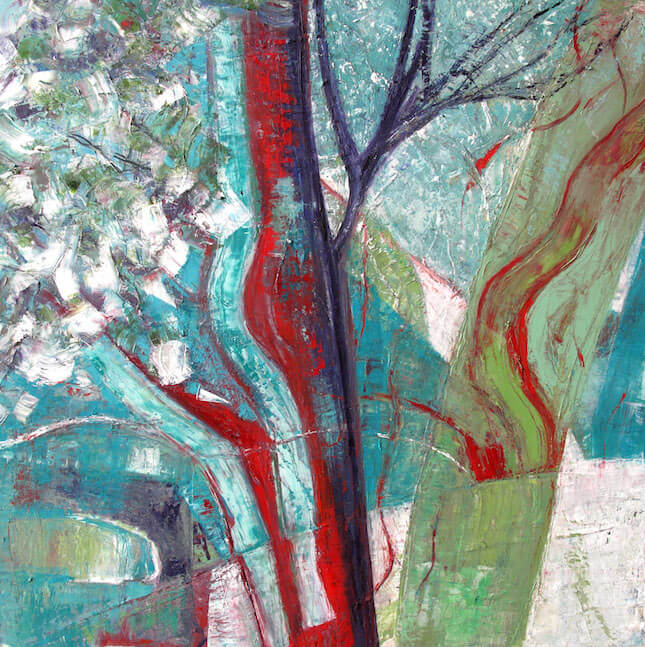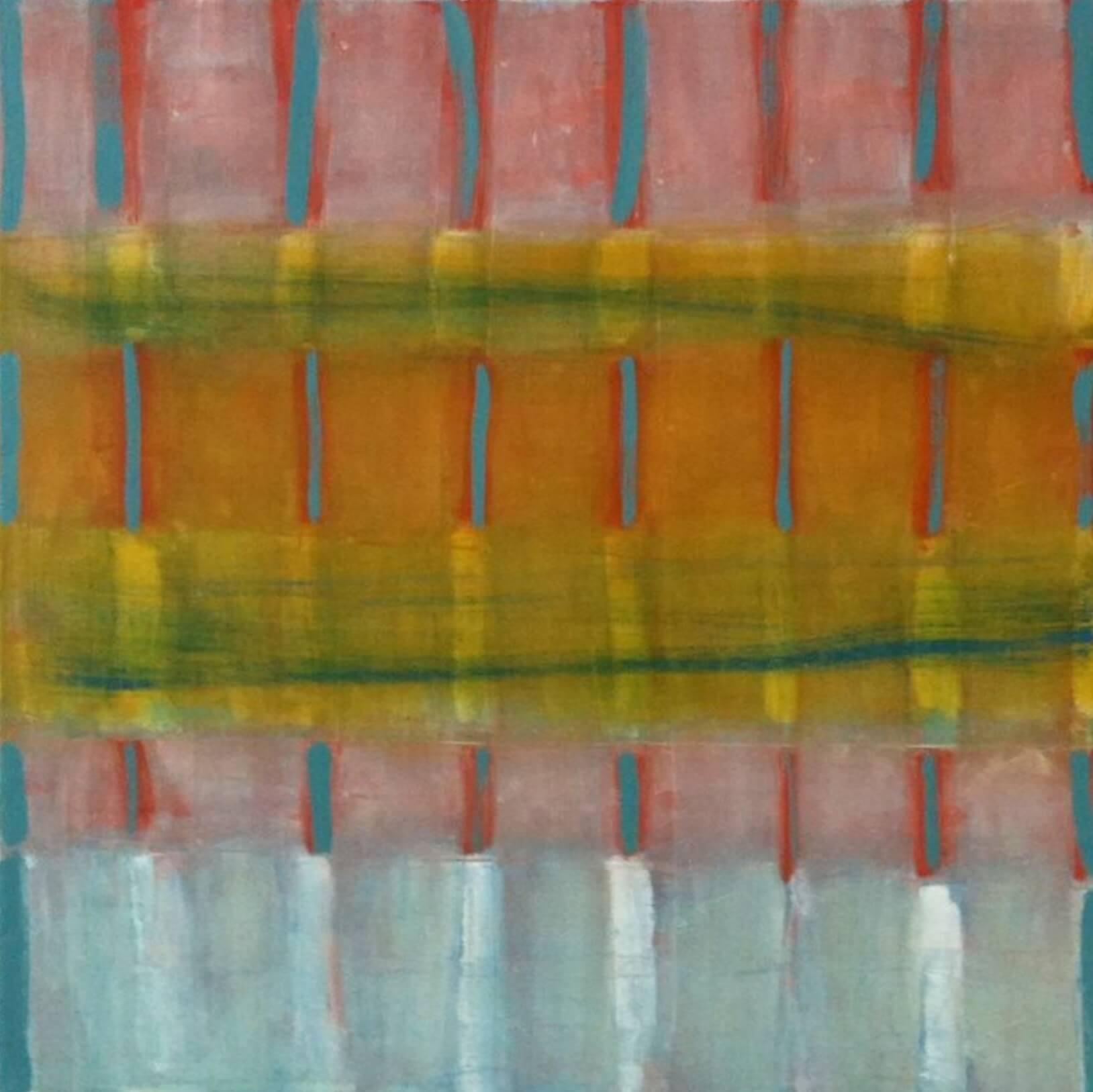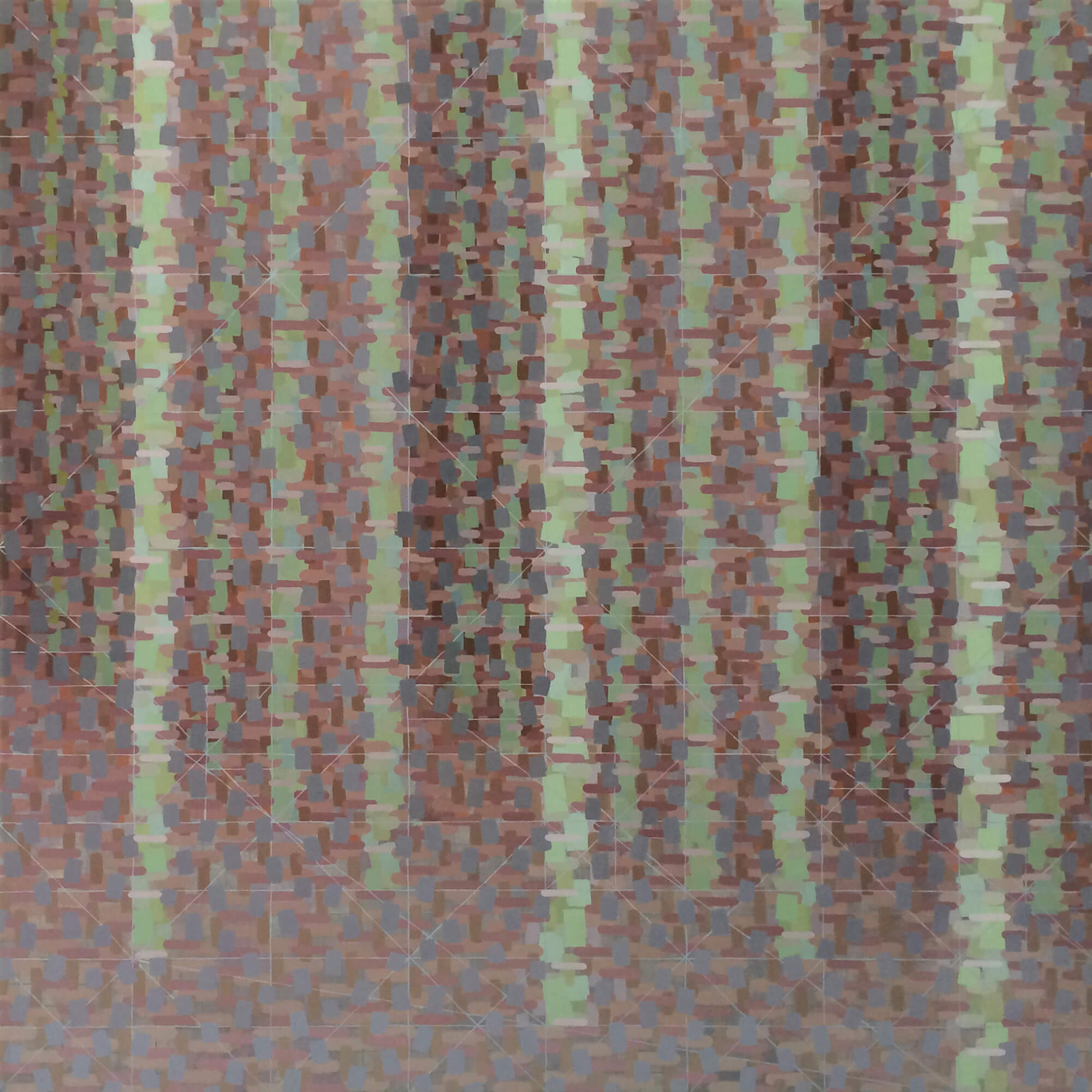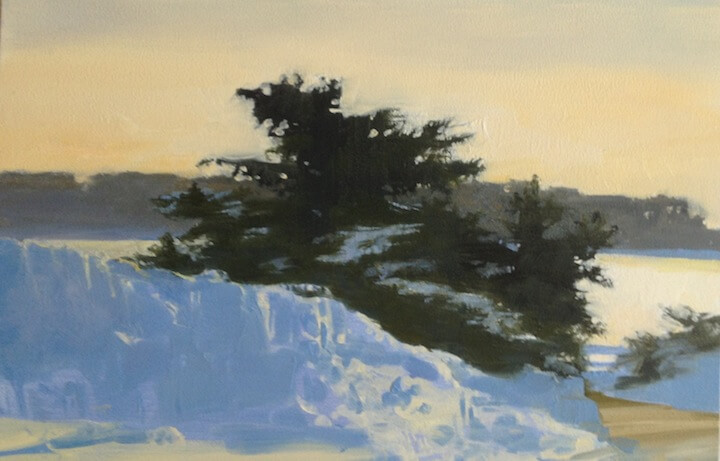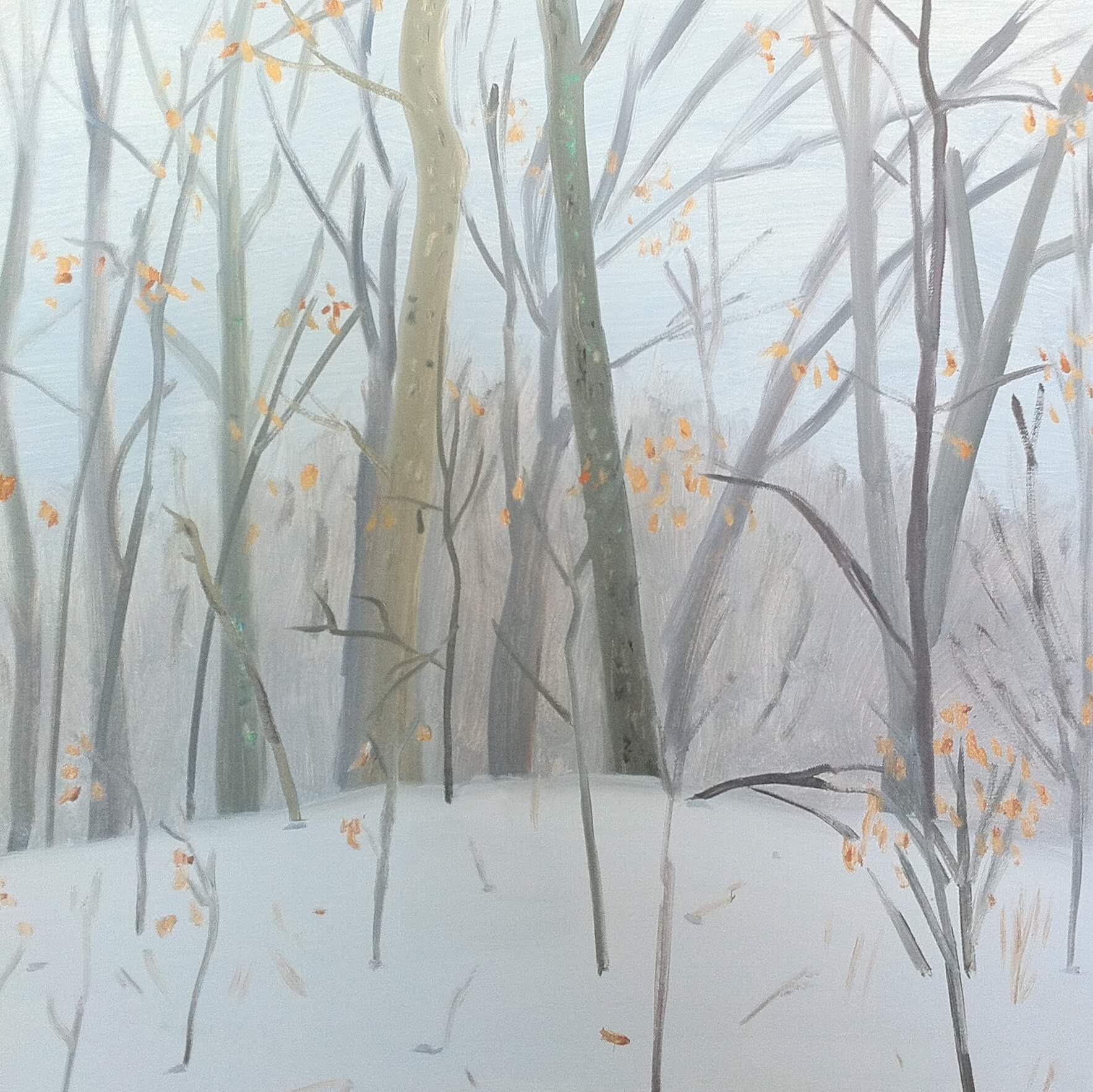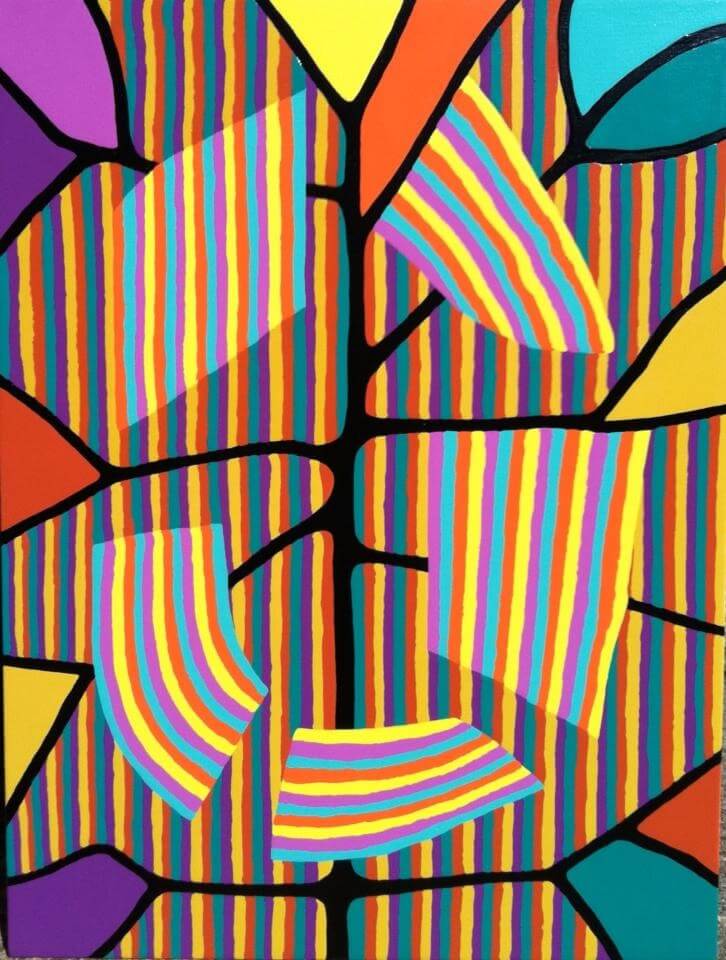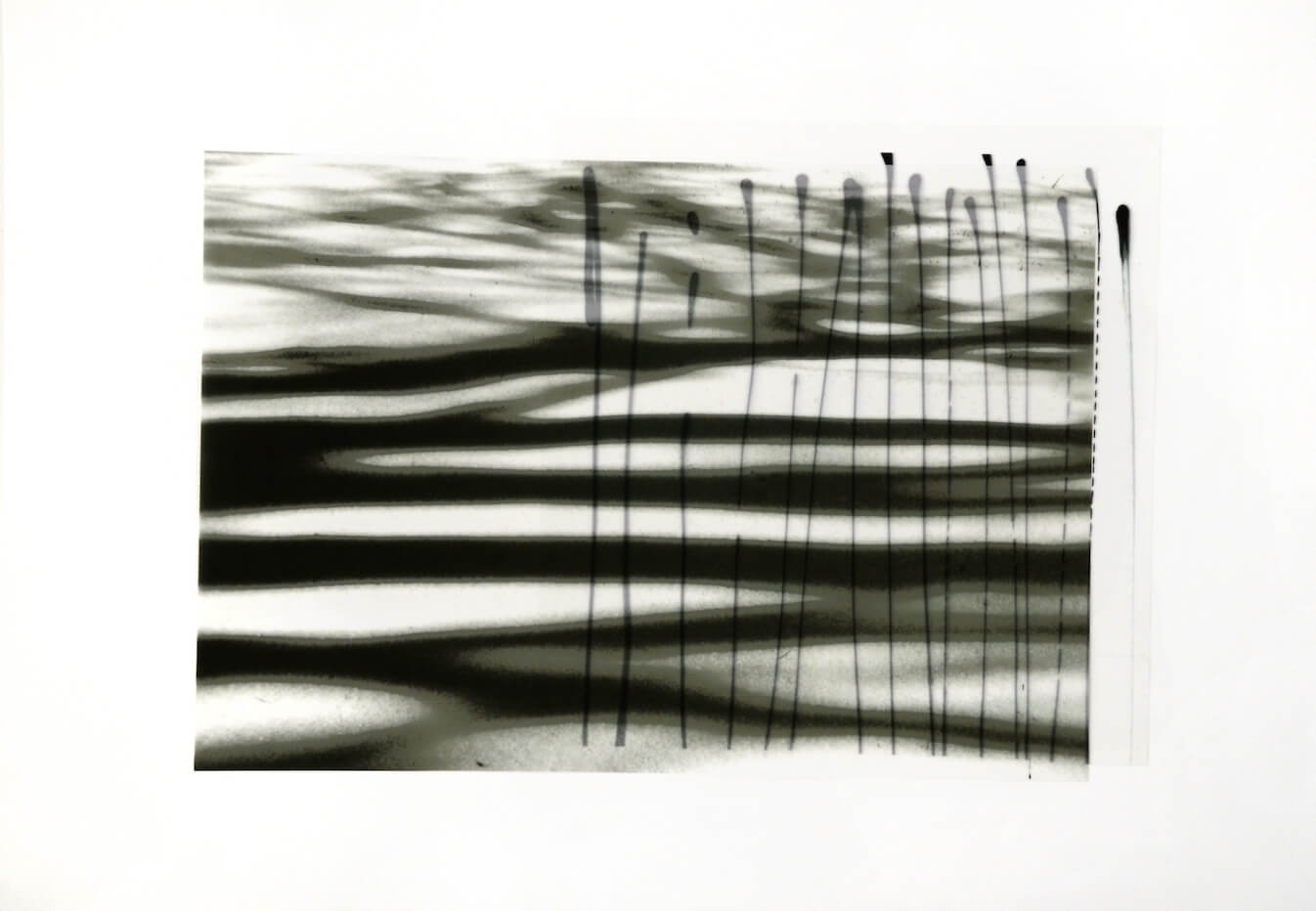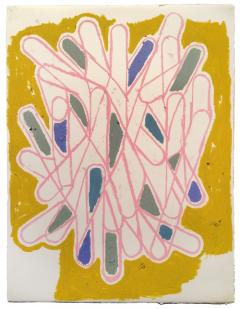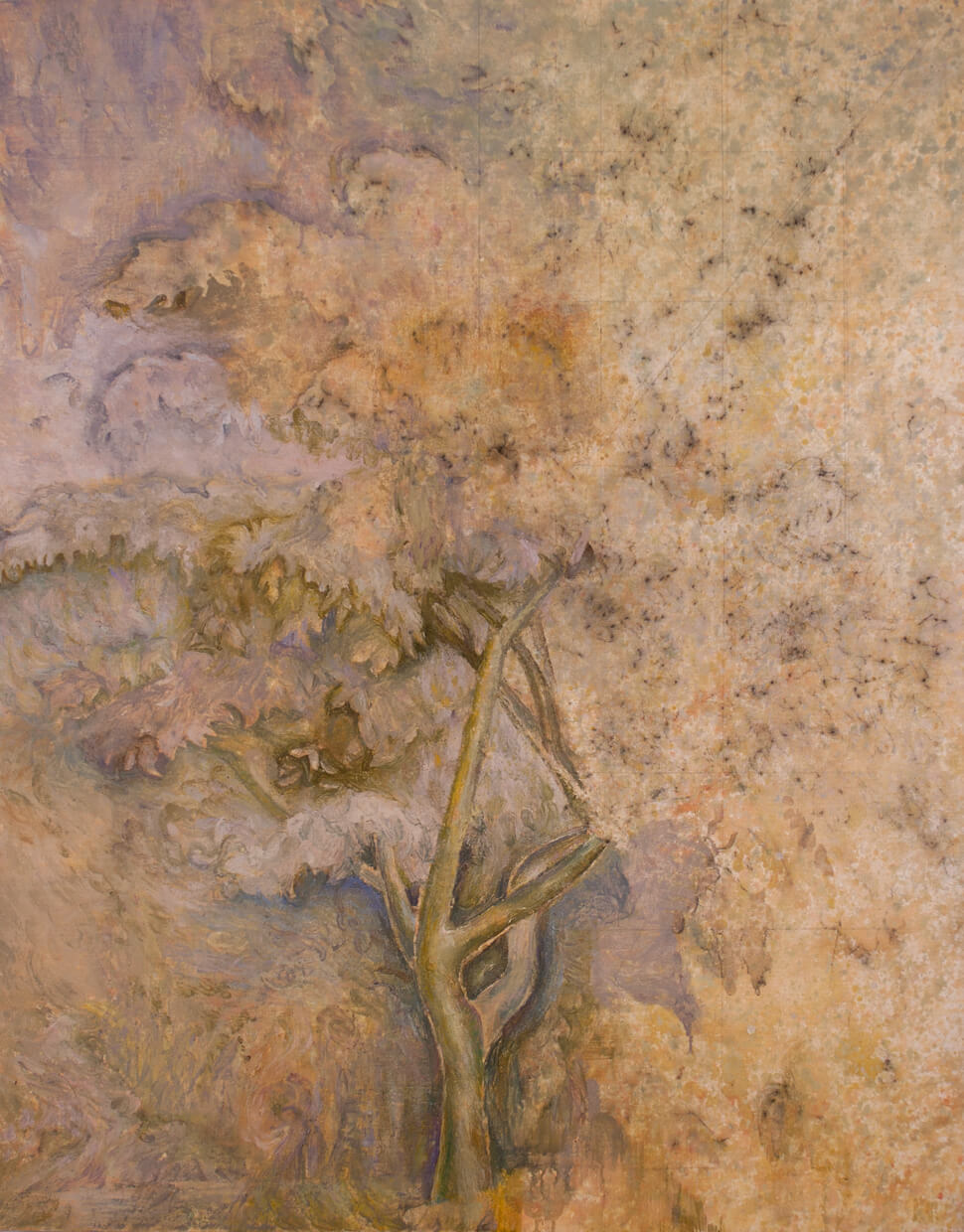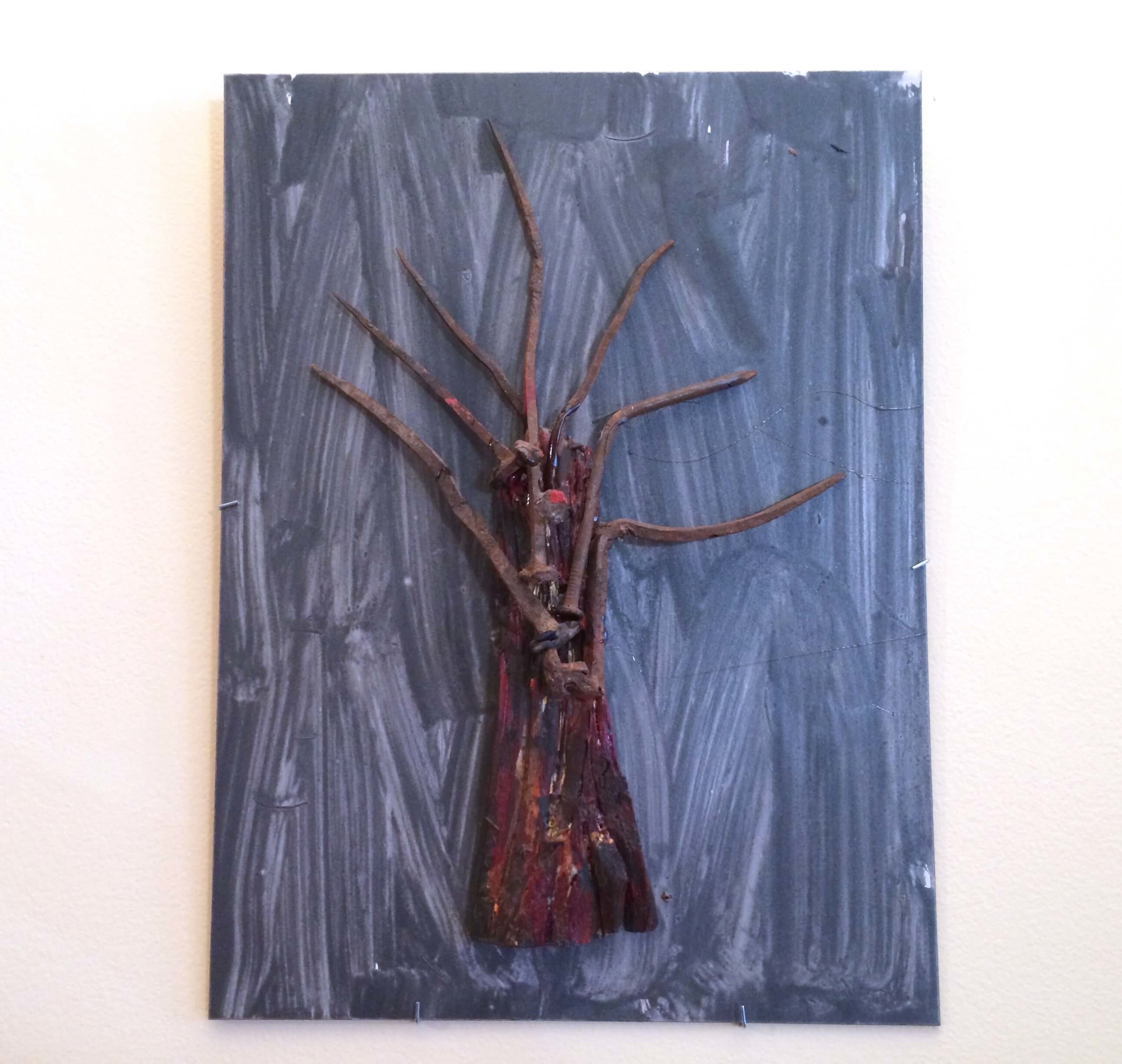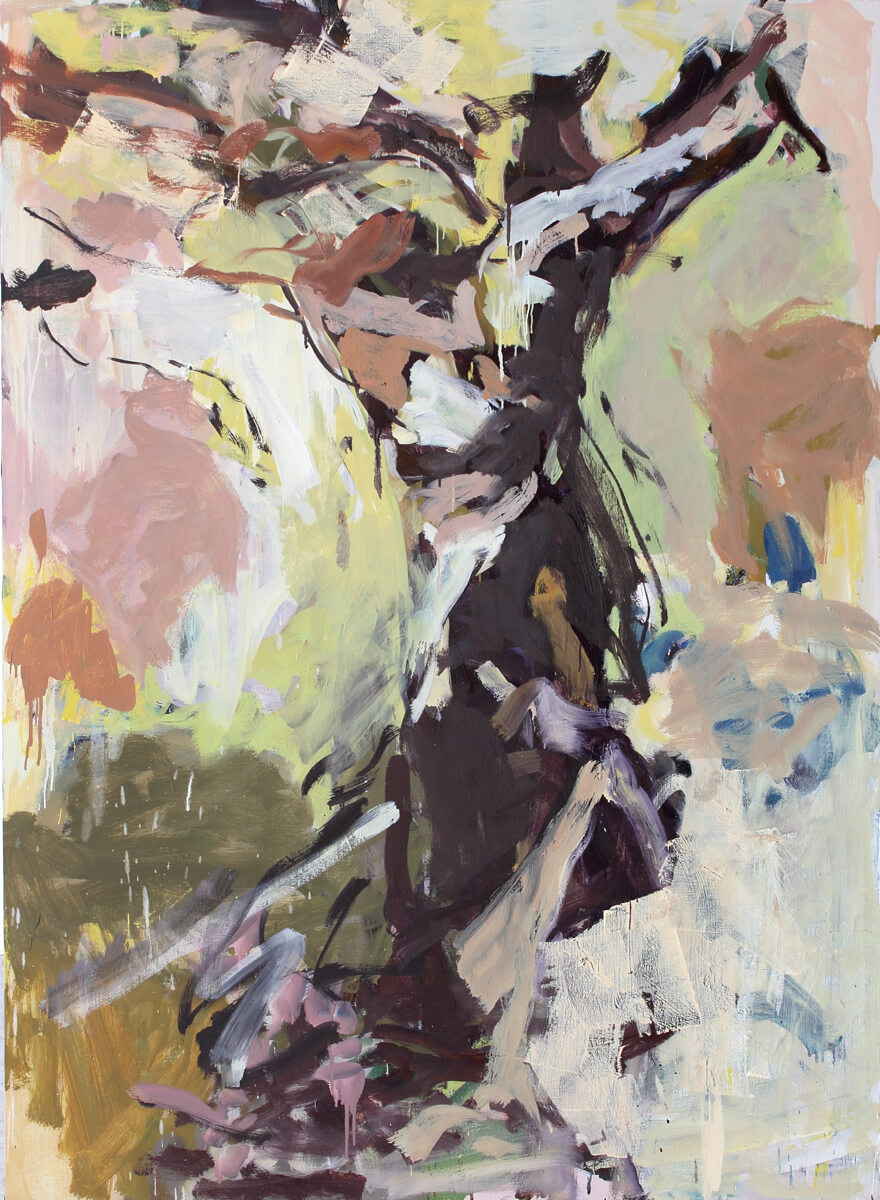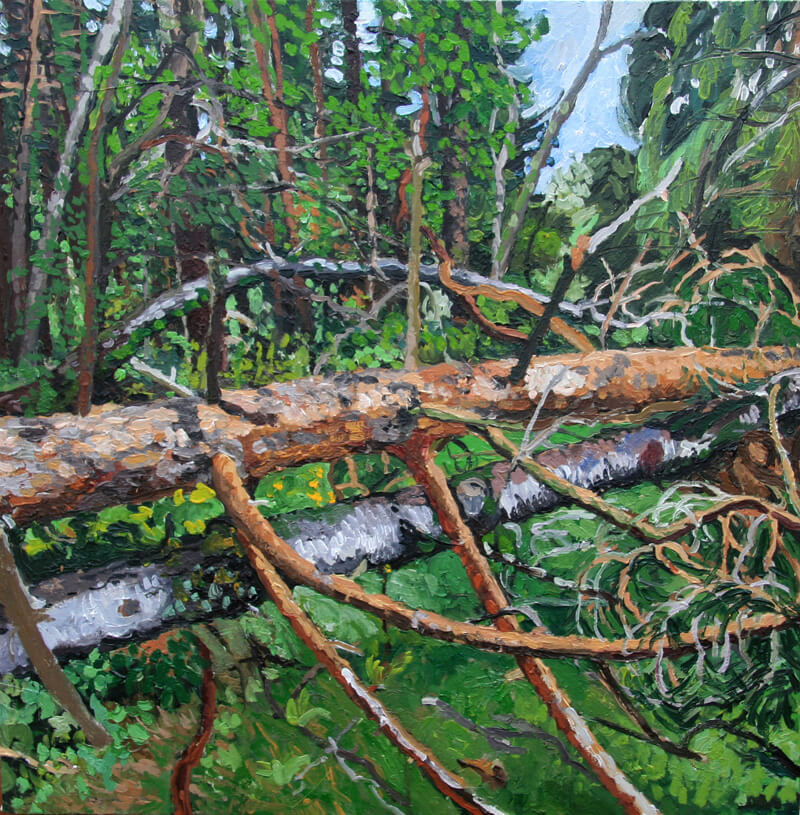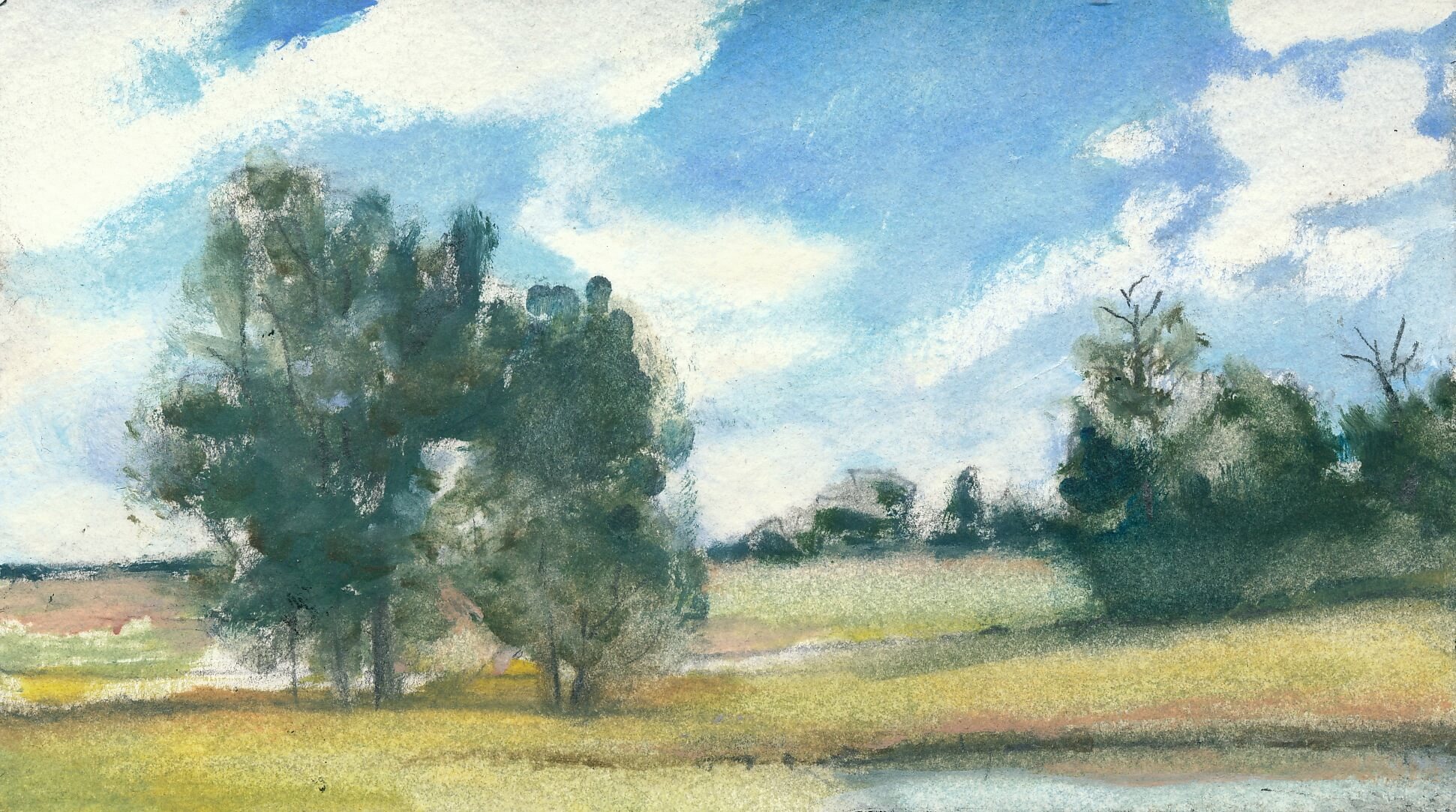Yearning Upwards, Painting Trees
Curated by Emily Berger
The Painting Center, New York
September 2 – 27, 2014
A closing reception will be held Saturday, September 27 from 4-6 pm. A panel discussion entitled “The Subject is Trees” will begin at 4:30pm. It will be moderated by Emily Berger. Participants include Ryan Cobourn, Fletcher Copp, Michael Goodwin, Kerry Law, Doug Holst, Patrick Neal, Marilyn Turtz, Sue Post, Rachael Wren and Neil Plotkin.
Painters’ Table (PT): In the current London Review of Books, John Barrell reviews a show of works by the Welsh landscape painter Richard Wilson. The show curators, as Barrell notes, argue that Wilson’s great leap forward was “to turn away from painting ‘invented compositions’ of the kind preferred by Lorrain and Gaspard Dughet, in favour of views of real places.” Although not every artist in Yearning Upwards, depicts “real places,” it seems this statement might well address a common desire among the artists, perhaps especially the more abstract painters, to once again return painting from a more conceptual state to one more connected to nature.
Emily Berger (EB): At the “Subject Matter in Abstract Painting” panel last week at Melville House, which ran concurrently with the Karen Schifano show I also curated, there was a lively discussion on this issue. My personal feeling is that I alway respond to painting abstractly – not paying much attention to ostensible subject matter, but instead focusing on the space, line, form, and color – the language of painting. I was always drawn to abstract work and wanted to paint abstractly. I never really wanted to go out and paint what I saw, although I sketch a little and do photograph. But “nature filters in” – someone said that. I feel like my work is a distillation or paring down of thought and sensation, especially of what I see or remember and search or long for in the world.< PT: This is not a “pure” landscape show, you have included a deliberate mix of artists whose approaches range from plein-air to near geometric abstraction, and yet all are undeniably involved with landscape, in particular the image of the tree. You also curated Nature Abstracted at The Painting Center in 2004, another show that investigated the influence of the natural world on abstraction and vice versa. Is this an ongoing concern of yours – does it come out of your own painting?
EB: Yes, there is a connection to my work (the black and white gelatin silver prints in the catalog are mine). If you look on my web site you will see a lot of photos of trees and in the work a connection to nature – air, light, light and dark, the tree as grid (Mondrian), first architecture – providing a roof, a horizontal and a vertical, and the ideas of “seeing through” and layering. All these things apply to and come from nature, including the gesture…but they are abstracted. I’m not always sure how nature gets in and is expressed but I know it is.
PT: In his catalogue essay for Yearning Upwards, Neil Plotkin makes a case that painting a tree is akin to riffing on a jazz standard in that the “standard offers the opportunity to consider a familiar subject from a different point of view.” His observation made me realize how much the selection of a novel subject has become the dominant standard of originality in the last half century. Subject matter often matters more than its interpretation in contemporary art, but this show demonstrates the opposite can be true.
EB: It’s the interpretation that counts. Of course this particular subject, trees, is so fertile, it lends itself to metaphor, human identification, and even anthropomorphism; Doug Holst said the tree is a visual manifestation of the human soul.
PT: It strikes me that the artist statement for any work in the show could simply be: “I paint trees.” There’s something refreshing about the fact that no further context is necessary to access the work because trees are universally understood; as a result, the particular dialogues between artist and subject stand out. Even though a simple statement could describe all the paintings exhibited, the resulting works are diverse. – none of these artists could be confused with another in the show.
EB: In all these painters in the show I found that quality of yearning and concentrated feeling around the idea of a tree, even as they are all very different one from another. In a recent interview, British painter Frank Auerbach mentions that Lucian Freud did a version of Constable’s Study of the Trunk of an Elm Tree. Auerbach says, “I remember him talking about the Constable and saying what a good idea it was. I had never thought about a tree trunk being an idea”. He also talks about a painting being “an enchanted vision or a lived through reality”. I think a successful painting is both.
Why a tree and not something else? The tree has everything – all the formal qualities we painters love to tangle with – layering, light and shadow, linearity, mass, variety of shape, color and form, texture. Whether it is seen as a flat shape, part of a grid, a three dimensional solid, in shallow or deep space, as one or many, paired, or single – it is a stand-in for the human, a being we project ourselves on. It lives and dies, it is strong and vulnerable, it stands up and falls down. And then, of course, we know we need trees to live – pretty basic. Without them we die. The painters in this show love trees.
